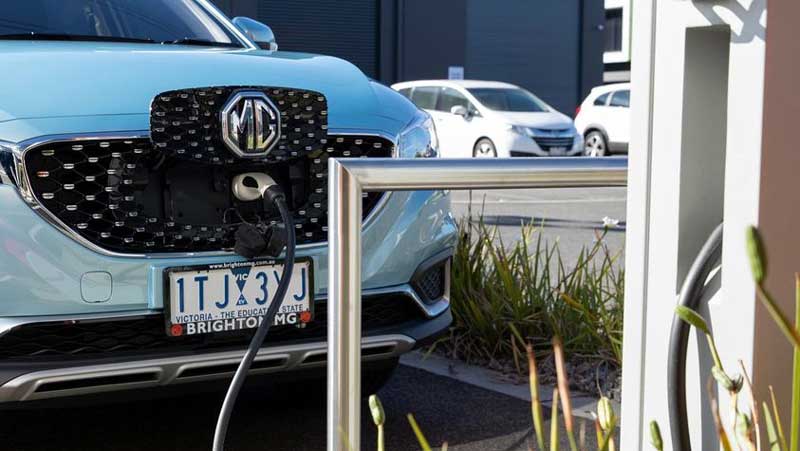Melbourne electric car charging company Global Electric Transport (GET) has launched its first charging hub in Melbourne, providing a charging solution for apartment dwellers who don’t have the option of charging at home.
The new charging hub, opened today by Victoria’s minister energy, environment and climate change Lily D’Ambrosio, consists of seven 22kW AC charging units which can add 22km of driving range for every 10 minutes plugged in (see this handy chart for a guide on EV charging speeds).
The seven charging bays, which are located at Lorbek Luxury Cars at 30 Prohasky Street, Port Melbourne, were inspired by a visit to China by GET CEO and co-founder Harry Hamann who noted the many EV drivers who used charging hubs outside apartment blocks and business areas.
Australia’s EV market, where sales accounted for less than 1% of the entire market in 2020, is extremely small compared to China which is the largest EV market in the world by volume and is predicted to approach 2 million units in 2021.
Amongst the reasons holding many people back from making the switch to electric vehicles is access to charging infrastructure.

“People living in high-density apartment towers, townhouses and strata buildings with limited off-street parking really are starved for choice because they have very limited ability to charge their vehicle from their own home,” GET co-founder and director and owners of Lorbek Luxury Cars Lorbek was quoted as saying by WhichCar.
“Few existing apartment towers have EV chargers, and if they do they are limited to only one or two, making it difficult for the growing number of EV drivers to reliably charge their cars.
“So, we decided to build our own user-pay Charging Hub so that drivers can charge their EV any time of the day or night in a safe and secure environment. As the world rapidly accelerates towards EVs, the Hub is the petrol station of the future.”
Hamann believes that as more charging infrastructure becomes available to drivers, more rapid uptake is possible.
In January, he praised news that auto giants such as GM and Volvo were making commitments to banish sales of new combustion vehicles and underlines the need for more chargers as the auto market transitions to electric mobility.
“Such a rapid exodus from petrol and diesel underscores the need for urgently expanding EV charging infrastructure, especially as governments and other large fleet buyers go electric,” he was quoted as saying.
“While conventional wisdom may be that consumers will lead the transition, the reality is that the carmakers are leading change by phasing out production of fossil fuel-powered cars, vans and light commercial delivery vehicles. By 2030, new car buyers will have little choice other than to buy electric.”
According to reports, the chargers do not require pre-registration and can be used simply by scanning a QR code on each charger which then launches an app.

Bridie Schmidt is associate editor for The Driven, sister site of Renew Economy. She has been writing about electric vehicles since 2018, and has a keen interest in the role that zero-emissions transport has to play in sustainability. She has participated in podcasts such as Download This Show with Marc Fennell and Shirtloads of Science with Karl Kruszelnicki and is co-organiser of the Northern Rivers Electric Vehicle Forum. Bridie also owns a Tesla Model Y and has it available for hire on evee.com.au.

